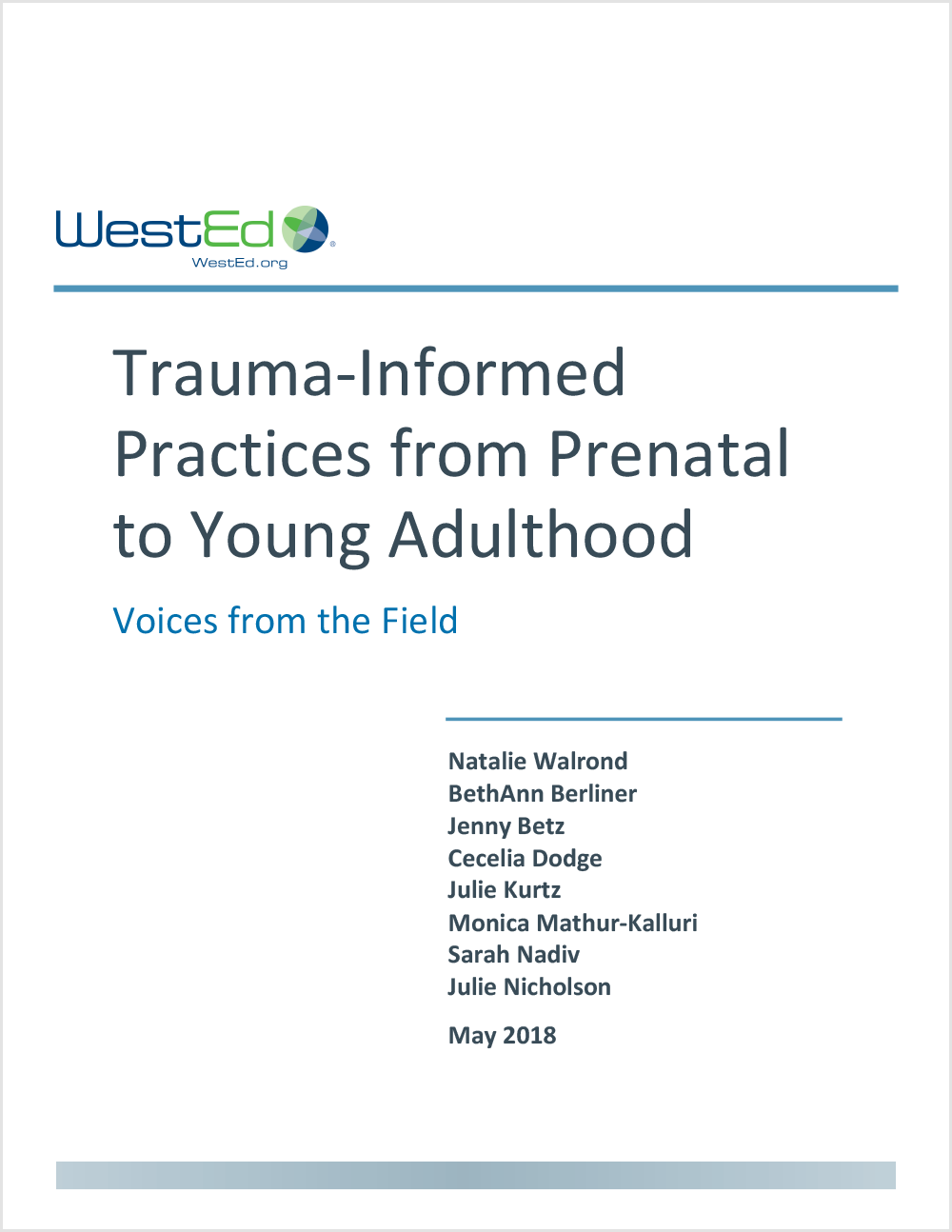For Many Struggling in the Opioid Crisis, School & Early Childcare Programs Provide Safe Spaces: Q&A with WestEd’s Sarah Nadiv
Posted on by Sarah Nadiv

In 2017, the U.S. Department of Health and Human Services declared opioid misuse a public health emergency with more than 42,000 deaths on record. Since then, states have focused on measures like distributing and providing training on life-saving medication and increasing the availability and access to treatment programs.
While both foci are critical, what’s missing is support for childcare providers and educators, to ensure that they, in turn, are able to support the innumerable children they encounter each day who exhibit the effects of trauma brought on by opioid misuse in their family or community.
Sarah Nadiv is a Senior State Technical Assistance Specialist with WestEd’s Learning Innovations program and Co-Director of Trauma-Informed Practices in Early Childhood. In this Q&A, she shares how adoption of trauma-informed practices can create safe spaces for students and their families.
How does opioid misuse affect our childcare programs or schools?
The best way to explain this may be to consider a hypothetical but representative child whose life has been affected by opioids from the beginning and whose behavior now, as a student, is affecting his classroom. Let’s call him Gavin. He only recently started kindergarten but his teachers already feel overwhelmed by his behavior. He’s unpredictable, aggressive, tearful, and noncompliant. Gavin was born pre-term and substance-exposed. In his infancy he struggled to survive. His mother is incarcerated due to all the things that come along with getting and using drugs, and both his maternal grandparents died from overdoses. Gavin’s father’s family lives overseas, so both Gavin and his dad feel alone and isolated. His father is straining to hold onto his job because he has to leave work several times each week during the day when Gavin’s teachers call to ask that he come get Gavin. Teachers and administrators are at the end of their ropes, and that is when they reach out for support.
How do you support teachers and staff?
First let me say that the opioid problem is just one of many kinds of adverse experiences that can result in trauma for children. Childcare providers and teachers have been seeing children with behaviors like Gavin’s since long before this particular crisis. So people have been studying trauma’s effects and over the years we have come to better understand what they are and how to mitigate or heal them. We know that we can support providers and teachers by providing them with information about trauma and the behaviors that are common among children who have experienced it, and by giving them practical trauma-informed practices to use. We teach them why a child like Gavin behaves the way he does, we support them in asking what his behavior is communicating, and we provide them with specific strategies they can use when such behaviors begin to escalate or, even, to forestall those behaviors. When staff have the appropriate training, then childcare programs and schools are positioned to support these children and their families.
What is an example of a trauma-informed approach to troubling behavior?
Let’s go back to Gavin. One day he becomes upset and takes a small toy and hides in the block area. His teachers were concerned that he was not being compliant because he wasn’t joining in with the activities. We showed teachers and staff how amazing it was that Gavin was aware of his emotions and found a way to calm himself down. Now his teachers praise him for calming himself down and welcome him back into the activity with his peers. This trauma-informed approach reinforces for Gavin that he has done a good job.
In your work with staff, students, and their families, what have you learned?
With funding from the Behavioral Health System of Baltimore, I conducted focus groups with families whose children attended childcare programs in the city, with the intention of better understanding the impact of substance misuse and community violence. Families talked about how their neighborhood was filled with drugs and violence; how their children couldn’t use the playgrounds because people were buying, selling, and using there; how their children couldn’t sit on the front porch because of the fear of drug-related violence. A notable proportion of those families reported that the only place they felt their children were safe was when they were in child care. They trusted the teachers and felt they could share what was going on at home without being judged. Families remind us that, as an important part of any community, childcare programs and schools are critical in addressing this crisis.
How do you see childcare programs and schools changing as more providers and educators learn about and implement trauma-informed practices?
As awareness of trauma-informed practices grows, we hope to see more environments where young children, students, and staff feel safe and supported.
Learn more about WestEd’s work in Trauma-Informed Practices.

